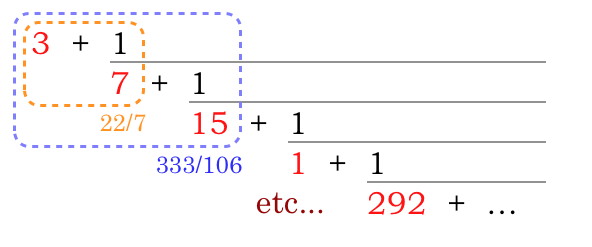Using continued fractions to find rational approximations to numbers.
This page repeats the previous one about continued fractions (CFs), but continues with the additional presentation of the sequence of approximations — that is, the fractions you get when you just add the first two, three, four, etc. terms in the CF. Here is an example with the CF of π:

You can see that the approximations get successively better. That is to be expected. But more important, that the approximations are particularly good when the integers in the CF are large, and vice-versa. When the numbers in the CF are small, the approximations are at their worst.
And what number has the smallest numbers in its CF? The golden ratio φ! They are all ones. This is what leads us to the assertion that φ is the “least rational” of numbers: its rational approximations always have the most error. It’s the hardest to get to, the most unruly, the wildest of the wild! That makes it something particularly special.
You may have noticed another interesting thing about the rational approximations for φ: both numerator and denominator follow a famous pattern called the Fibonacci sequence. The next pages will investigate this pattern and tie it in with fractals and recursion.